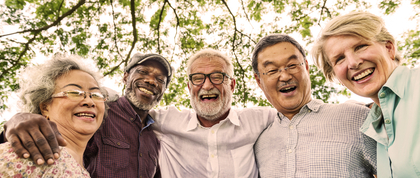
A perspective piece by Dr. Jo Ivey Boufford
Living a long and healthy life is everyone’s goal, and every day we see articles urging people to stay active and engaged as they age. We also see amazing examples of physical accomplishments by individuals over 65, 75, and 85+ running marathons, sky diving, etc. So individual behavior change is important, but taken alone it’s not enough.
For everyone to have the best opportunity to stay healthy and active, improvements to the social, economic and built environment are critical to preventing disability and facilitating independence and an enhanced quality of life.
New York City has taken on this challenge through its work over the last decade to apply the World Health Organization’s principles of an Age-Friendly City.
The WHO model is a paradigm shift to celebrate successful aging (remember: longer life expectancy is a public health victory!) and promote healthy aging using a Life-Course Approach, rather than focusing only on the looming crisis created by increasing numbers of older people overwhelming the capacity and breaking the budgets of our health and social service systems. This model is equally applicable to the prevention of NCDs, where increasing evidence shows that insults over the life course seem to make individuals more vulnerable to premature morbidity and mortality.
So where do we start? The key to the success of Age-Friendly cities begins with the voices of older people. They were asked a simple question: What makes it harder or easier for you to live in your community? Working with WHO, 35 pioneer cities identified eight domains important to healthy and active aging. They include the built environment; transportation; communication and information; housing; respect and social inclusion; social participation; civic engagement; and the one we tend to focus on: health and social services. In NYC, several thousand older people were involved in community meetings, surveys, focus groups and social media to give their opinions.
For a city to take on such an initiative, political leadership is key. Mayor Michael Bloomberg and his successor, Bill deBlasio, both committed to this effort, which was begun in 2007 by the New York Academy of Medicine. They instructed multiple agencies to examine their programs with an aging lens and to tweak the things they were going to do anyway – contracts, capital investments, purchasing agreements -- to better address the needs of older people. An Age-Friendly NYC Commission was established that included the business community, NGOs, service providers, academics, media, and professionals — from age-friendly architects to planners, lawyers, and librarians—and, of course, older people themselves.
So what are the results? You can see them around you every day: public pools city- wide featuring senior hours (an initiative from East Harlem); age-friendly supermarkets (from the Upper West Side); traffic-calming structures; timed crossing clocks at intersections; metal benches with hand grips; transparent bus stops with light and print that are age-friendly; and age-friendly museums.
What has been learned?
- Older people are the experts on their own lives, and key informants and partners
- Approaches that change the environment are more effective than efforts to change individual behavior, especially in poorer communities without healthy choices
- Improvements require political support from the highest levels
- Partnerships beyond government are key for sustainability
Governor Andrew Cuomo recently declared New York State to be the first Age-Friendly State, and is instructing state agencies to take on this agenda in all their work. The changes may start with a focus on older people, but they really make communities better for people of all ages.
Jo Ivey Boufford, MD
Clinical Professor of Global Health